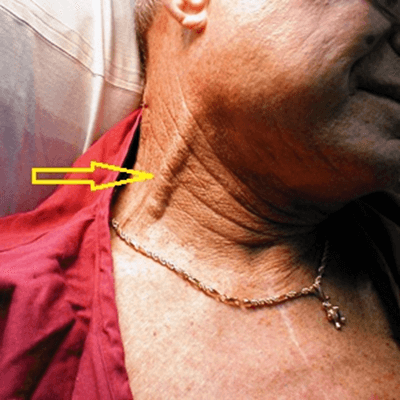JVD Full Form | What is Jugular Vein Distension
What is the full form of JVD
JVD: Jugular Vein Distension
JVD stands for Jugular Vein Distension. It refers to the bulging of external jugular vein in a person's neck. Jugular veins are located on both sides of our neck. They carry blood from a person's head to superior vena cava (largest vein in the upper body) which empties into the heart. The blood pressure in the vena cava is called central venous pressure (CVP). JVD occurs when the jugular vein bulges as a result of high pressure in the jugular vein due to the increased pressure of the superior vena cava and looks like a rope or tube (bulged vein) below the skin.

The height of the bulge is measured form the top of the collar bone (clavicle). It is an indirect measure of the central venous pressure, the pressure in the right upper chamber (atrium) of the heart. The more is the bulge, the more will be the pressure.
JVD is diagnosed through patient's medical history and a physical examination. In the physical examination, the doctor checks the central venous pressure, position of right atrium, hepatojugular reflux, no venous pulsation with compression, and arterial pulsation with compression.
Causes
There are various factors that cause JVD such as:
- Right-sided heart failure
- Pulmonary hypertension
- Tricuspid valve stenosis
- Superior vena cava obstruction
- Constrictive pericarditis
- Cardiac temponate
Symptoms
If a person is experiencing any of the following symptoms alongside JVD, he requires immediate medical attention.
- Anxiety
- Confusion
- Nausea
- Vomiting
- Excessive sweating
- Decreased alertness
- Chest pain
- Heart palpitations
- Rapid heart rate (tachycardia)
- Low urine production
- Difficulty breathing
- Wheezing or choking
- Memory loss
- Nocturia